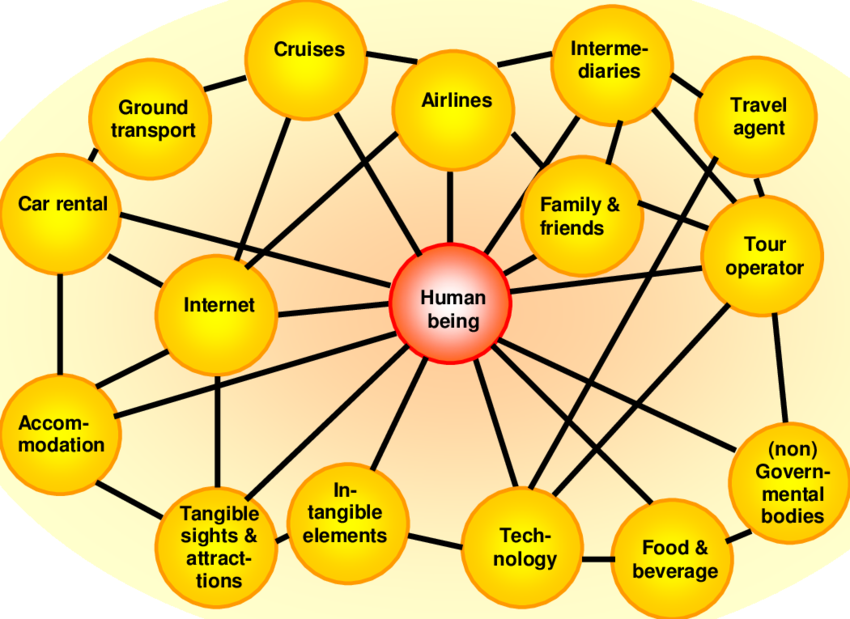Tourism, as an industry, has been a significant contributor to the global economy. It not only generates revenue but also fosters cultural exchange, promotes peace, and aids in regional development. This article explores the benefits of the Tourism Networknet perspective, emphasizing the interconnectedness of various elements within the tourism industry.

Economic Impact
Tourism is a major source of income for many countries, contributing to their Gross Domestic Product (GDP). It generates revenue through direct spending on accommodations, food and beverage, retail opportunities, and transportation. Moreover, it indirectly supports other sectors like agriculture and manufacturing, creating a ripple effect in the economy. In the days it is the technical world so, if the tourism is a technical expert or he is a digital SEO expert and does his work on tour, it is a big benefit for Tourism Networknet.
Employment Opportunities
Tourism creates jobs, both directly and indirectly. From hotel staff to tour guides, from restaurant workers to retail employees, the industry employs millions of people worldwide. It also stimulates job growth in related sectors such as construction, agriculture, and manufacturing. When the Tourism Network is strong then it is the best opportunity to get the best job because the tourism meets with the different peoples.
Cultural Exchange
Tourism fosters cultural exchange and understanding. It provides an opportunity for tourists to experience different cultures, traditions, and lifestyles firsthand. This mutual exchange promotes tolerance, respect, and a broader understanding of the world. When the Tourism Networknet is good it is mostly cultural exchange because the different peoples meet with you and share the knowledge share with you.
Environmental Conservation
Tourism can play a crucial role in environmental conservation. Eco-tourism and sustainable tourism initiatives encourage the preservation of natural and cultural heritage. They promote responsible travel practices, contributing to the conservation of biodiversity and ecosystems. If you face any problem on the tour then your network gives you the best way to help with you so, this thing is also very important for you for environmental conversation.

Infrastructure Development
Tourism often leads to improved infrastructure, benefiting both tourists and the local population. This includes better roads, airports, public transportation, and facilities like hospitals and schools. If you help the needy culture by giving examples then it is a very helpful thing for those peoples they are live on their sides so, it is also the most important thing for your infrastructure development.
Learning and exchange
Tourism networks can facilitate the sharing of knowledge, information, and best practices among tourism actors, as well as the co-creation of tourism experiences and innovations. Tourism networks can also enable access to external resources, such as markets, technologies, and policies, that can enhance the competitiveness and sustainability of tourism destinations.
Business activity of Tourism Networknet
The travel industry organizations can work on the proficiency and viability of the travel industry tasks, by decreasing exchange costs, expanding coordination, and making collaborations and complementarities among the travel industry entertainers. The travel industry organizations can likewise encourage the advancement of new items, administrations, and markets, by animating business, development, and enhancement in the travel industry.

Community
Tourism networks can enhance the social and environmental responsibility of tourism actors, by promoting the participation, collaboration, and empowerment of local communities, as well as the conservation and valorization of natural and cultural heritage. Tourism networks can also contribute to the well-being and quality of life of tourists and residents, by providing opportunities for creative expression, personal growth, and cultural exchange.
The tourism network perspective can help to explain global tourism development, as well as individual tourism performance, by analyzing the network structure and its effects on tourism outcomes. A tourism network perspective can also help to design and implement effective tourism policies and strategies, by identifying the network strengths and weaknesses, and by fostering network development and optimization.
Individual-Level Effects
1. Node Characteristics
- Degree, Closeness, and Betweenness Centrality: Regions with high degrees of connectivity (many links), centrality (closeness to other nodes), and betweenness (acting as bridges) perform better in international tourism. Think of these regions as major hubs.
- Eigenvector Centrality and Local Clustering Coefficient: Interestingly, high eigenvector centrality (influential nodes) and local clustering (close-knit communities) can negatively impact tourism performance. These nodes may become insular or overly reliant on specific connections.
2. Regional Influence
- A region’s network structure significantly affects its own tourism performance. Well-connected regions benefit from spillover effects, while isolated regions face challenges.
- Stronger effects occur within connected regions. For instance, neighboring countries often share tourists due to geographical proximity and cultural similarities.
Conclusion
Tourism Networknet, when managed responsibly, can have far-reaching positive impacts. It’s a powerful economic tool, a job creator, a catalyst for cultural exchange, an advocate for the environment, and a driver for infrastructure development. The Networknet viewpoint stresses the interconnectedness of these advantages, featuring how every component of the travel industry adds to a bigger, helpful organization. As we push ahead, it’s fundamental to advance manageable and dependable the travel industry practices to augment these advantages for all.

